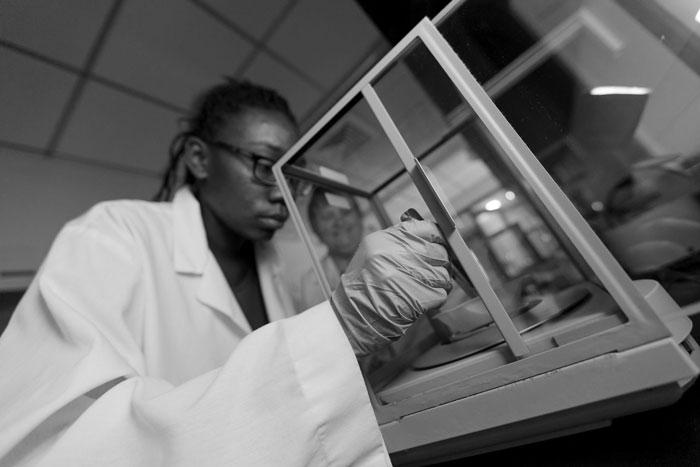Where Memory Lives

Imani Beard '17 works in the memory lab while Associate Professor of Psychology Teresa Barber looks on. Photo by Carl Socolow '77.
Student-faculty summer research experiments with memory to take a new look at Alzheimer’s
by Tony Moore
Remember the roar of the last roller coaster you rode, the electric cold when you waded waist-deep into the ocean, the sensation of rocking back and forth on a subway as the lights flickered. Now think about these memories as existing in some kind of physical way, a chemical way, a nebulous cloud-storage way, floating inside your brain.
Those memories are in there somewhere, but … where, and how does memory work? The study of memory has become Associate Professor of Psychology Teresa Barber’s life’s work, and her recent research takes a new look at memory and its relationship with Alzheimer’s disease.
Lost and found
With Alzheimer’s patients, if those memories of roller coasters and oceans and subways happened years before the onset of the disease, they would likely remain intact. If they happened in the past week, in most patients, they would never make it to the person’s long-term memory and be lost forever.
"It's good to study how something goes wrong as a way of studying how it normally goes right,” Barber says of the memory experiments that she and three students—two Dickinson students and a Carlisle High School student—are conducting this summer. The heart of the research is the same as previous projects Barber has undertaken with a different group of student researchers, but this summer’s experiments focus on a behavioral approach to testing and maybe improving memory.
“In Alzheimer's settings, care practitioners always try to get patients involved with things, and it helps them stay engaged,” Barber says, noting the extensive published research on the idea that if you make the life of someone with Alzheimer's more exciting—literally more memorable—he or she is more likely to remember it. So this summer’s experiment goes like this: Chicks are given scopolamine, a drug that induces amnesia; then they eat a flavored bead of food that they quickly forget about; and then they go off to mingle with other chicks. Barber and the students then see how their social activity might affect the chicks’ memory of that bead—if their memory is restored enough that they continue to avoid the ill-flavored bead or go back to it.
“It might be general arousal, such as increased epinephrine. Maybe it's bringing more oxygen to the brain, like ginkgo does by dilating blood vessels,” Barber says of the effect socialization has on memory. “With animal models, we can ask multiple questions and look at whether arousal is an important part of brain activity, as well as how memories don't work to help us see how they might work.”
Collaboration is key
Barber calls her student researchers her collaborators, and with good reason.
“My role is that of a supervising researcher,” says Gabrielle Frenkel ’16 (neuroscience), who creates the scopolamine, marks the chicks and supervises the other student researchers. “This work is instrumental to my future work as a medical student, as it provides me with a strong foundation in clinical-style research, and, as a future general doctor, I am very likely to come in contact with [Alzheimer’s].”
Imani Beard ’17 (biochemistry & molecular biology) also sees the summer research project as a foundation for future scientific work.
“My overall goal is to use science to improve life, and [it’s great] being able to spend my summer working on something that can have an impact on the rest of world,” she says. “I know a cure won’t just come overnight, but experiments such as this can help lead to different methods of treatment for those who suffer from Alzheimer’s.”
Learn more
- Department of Psychology
- Department of Neuroscience
- Department of Biochemistry & Molecular Biology
- "Seeds of Memory"
- Research at Dickinson
- Latest News
Published July 14, 2015